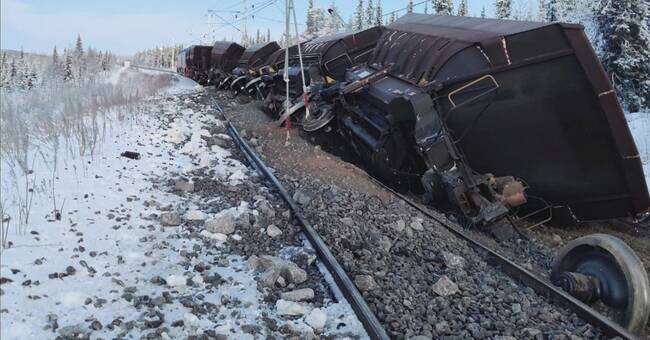The Accident Investigation Board went to the accident site on Monday, but will only decide in a few weeks whether to make a full-scale investigation of the incident.
If not, it will be the Swedish Transport Administration's investigation that may decide the debt issue.
It is a question of whether it is the Swedish Transport Administration's facility or LKAB's train set that has caused the derailment.
Can be large costs for LKAB
In case it can be established that it is the latter, LKAB may have to pay for the repair of rails and embankments.
Then the costs do not stop at the 50-60 million that the damaged wagons can cost to replace.
Repairing 800 meters of rails and embankments can cost at least as much.
In the event that the debt ends up with the Swedish Transport Administration, LKAB will pursue claims for damages for its material damages.
But that is only part of LKAB's actual losses.
- In similar cases, we have so far only received compensation for damage to wagons and ore products, never before the loss of revenue in the form of missed deliveries.
But we have such a process underway since a previous incident, says Jan Lundgren, logistics manager at LKAB and CEO of Malmtrafik AB.
SEK 14 million per day
In Narvik, boats are waiting for ore and according to Jan Lundgren, LKAB will lose revenue of SEK 14 million for each day that train traffic is at a standstill.
In the present case, it is ore from Malmberget that should have been sent via Narvik.
LKAB tries to compensate for this by increasing production in the Kiruna mine.
- But we sell everything we produce and we will not be able to catch up with what we lose.
We are also postponing a maintenance stop in Kiruna, which will also cost a penny, says Jan Lundgren.

